
In Full
Bloom
We asked celebrity florist Emily Thompson to design three spring arrangements. Below, her custom bouquets—perfect for re-creating at home
Emily Thompson—the New York City–based florist whose wild, rambling arrangements have decorated the White House and MoMA in addition to countless chic homes—is known for subverting the expected. A classically trained sculptor (she holds an MFA from UCLA), Thompson plays with structure, proportion, and unconventional greenery (think garden shrubs and common weeds) to create one-of-a-kind arrangements that master the line between structural discipline and free-form botany. “What I’m after is to show people how interesting the natural world is, rather than just giving them the satisfaction of a big-headed peony,” she explains.
For the three arrangements seen here, Thompson worked with Ralph Lauren wares—made in collaboration with famed British pottery maker Burleigh and inspired by vintage Americana textiles—but any similarly shaped vessels can be used at home. The key to success is all about proportion. “The expression we use around here is that ‘we want to eat the vase,’” Thompson explains of an approach that sees buds and branches strategically spilling over in novel ways. “In the case of these vessels, which have really beautiful botanical prints, they don’t need to be anonymous, but their character needs to play with the materials,” she says. True to her style, the pieces Thompson selected— a fruit bowl and two pitchers—are ideally equipped to hold combinations made to both catch the eye, and to hold it. “The scale feels really good in the home,” Thompson says. She adds, “If I were to instruct someone trying to work with these materials, I would say that the exaggeration of proportions and restraint of materiality should be the leading concepts when approaching yard clippings, a supermarket stash, or the vast selection that the flower market has to offer.” Below, Thompson breaks down her creations and offers tips for bringing them to life in your own space.
Butterfly Ranunculus and Begonias in a Faded Peony Etruscan Pitcher
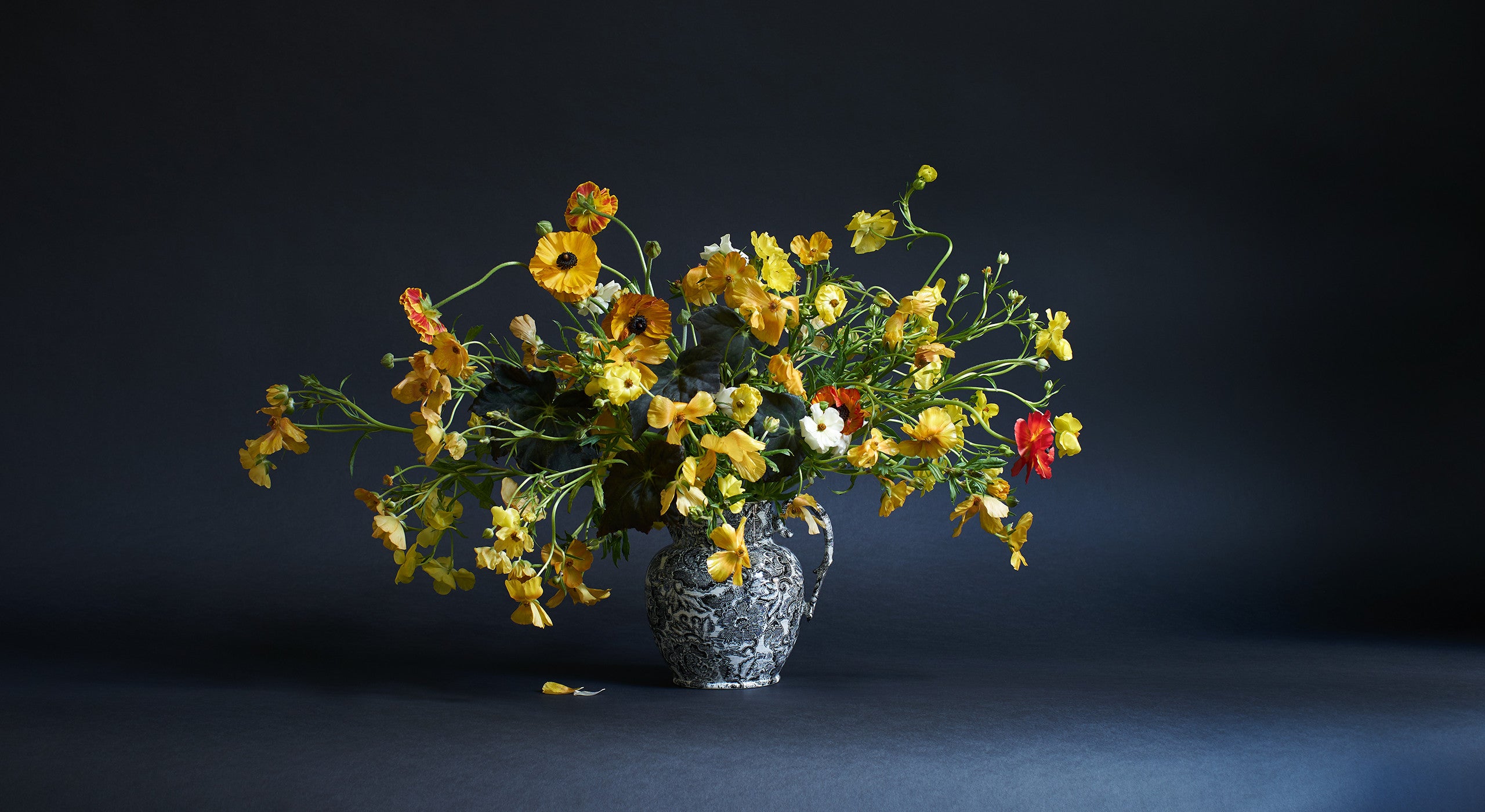
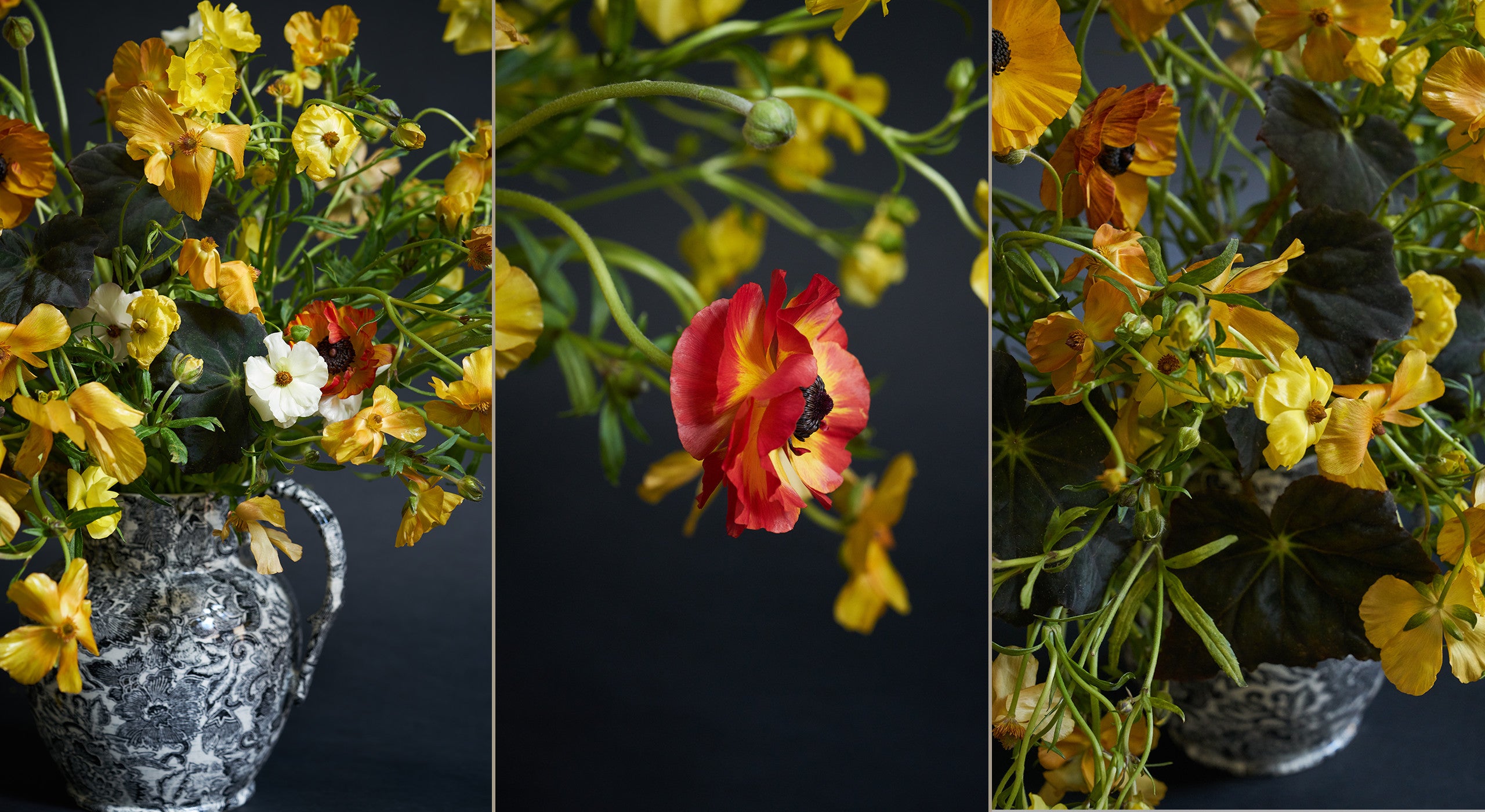
Epimediums, Leucothoe, and Philodendron in a Garden Vine Tankard Pitcher
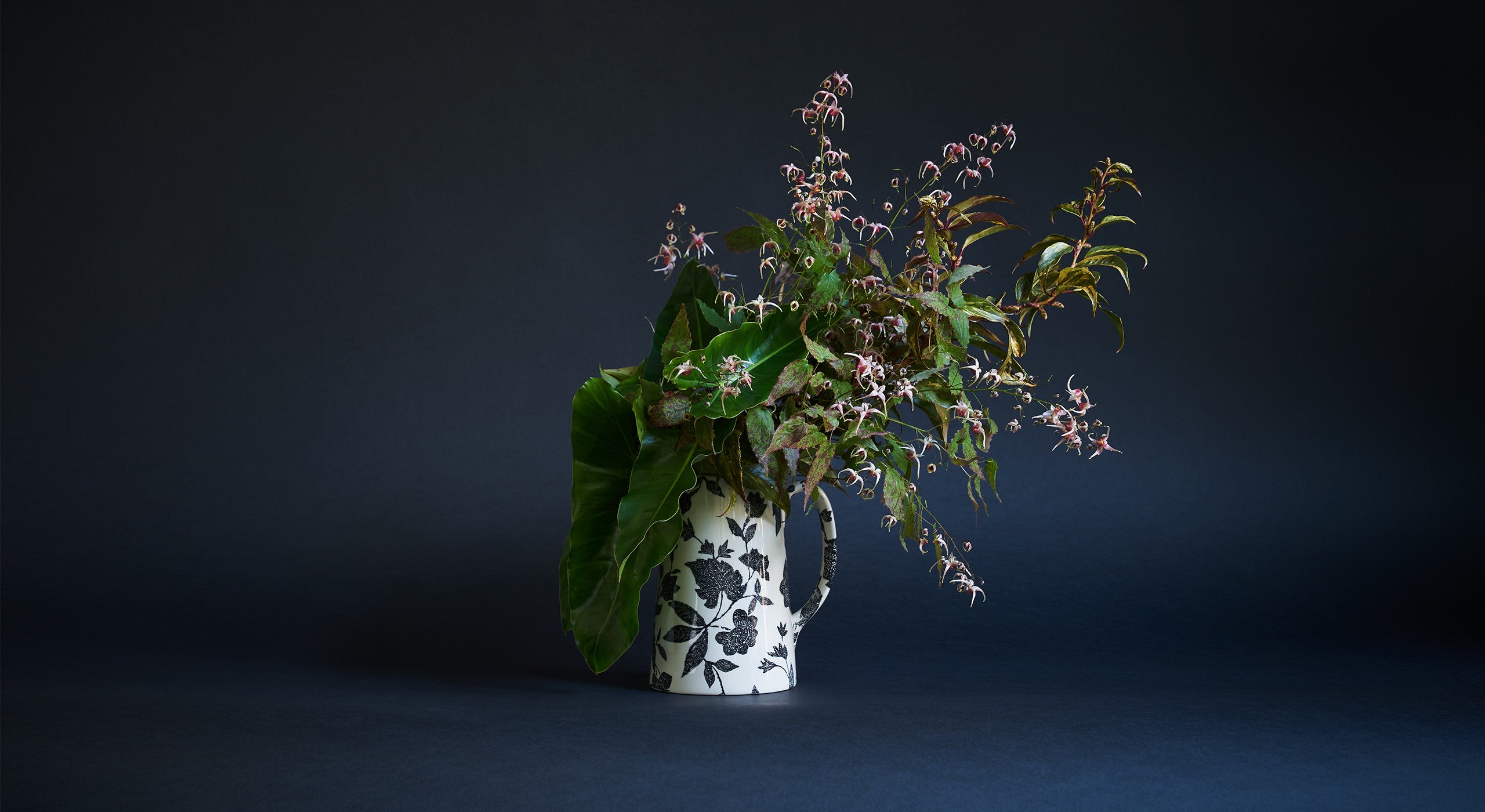
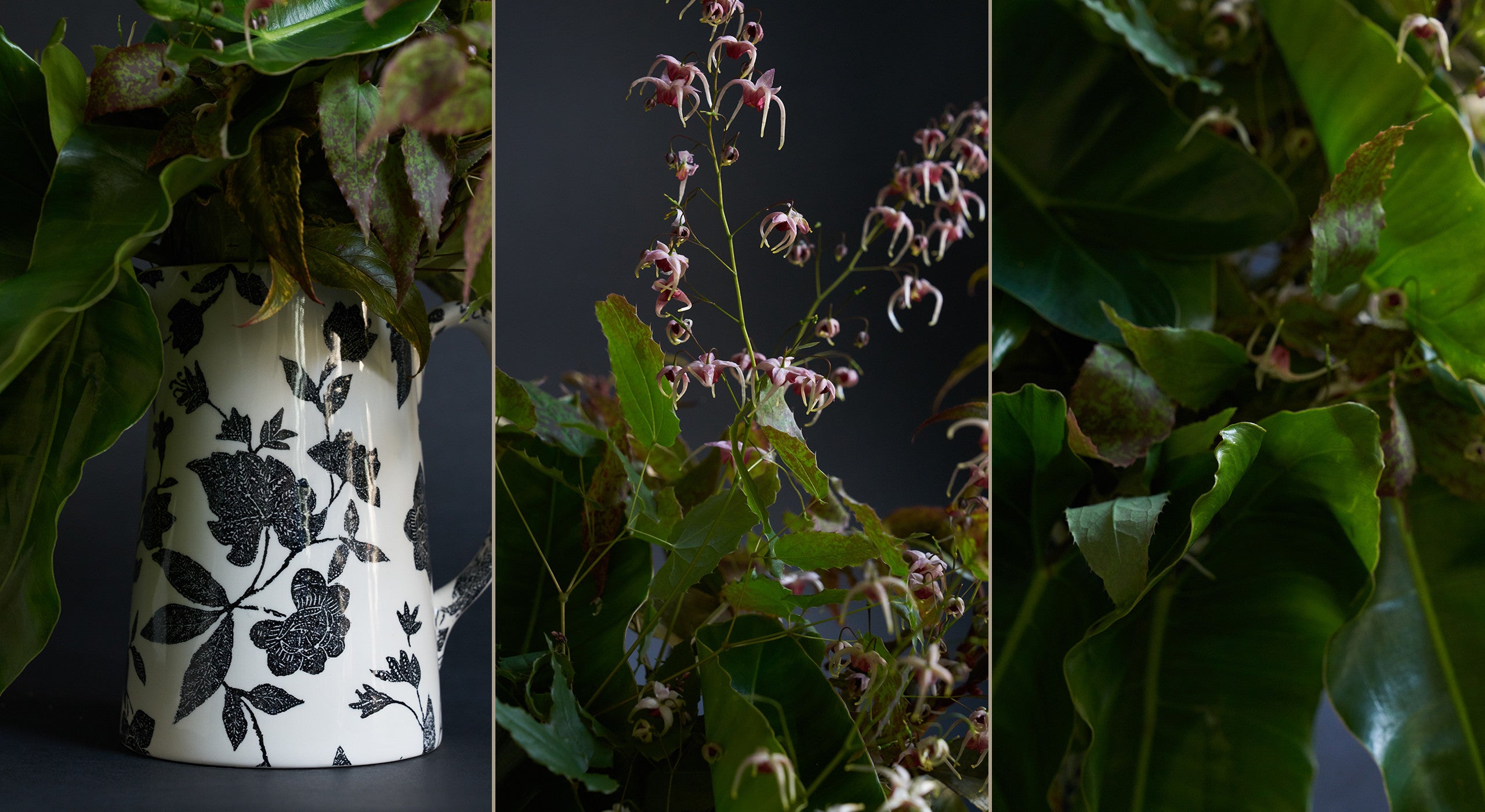
Flowering Dogwood, Lenten Rose, and Begonia in a Faded Peony Medium Fruit Bowl
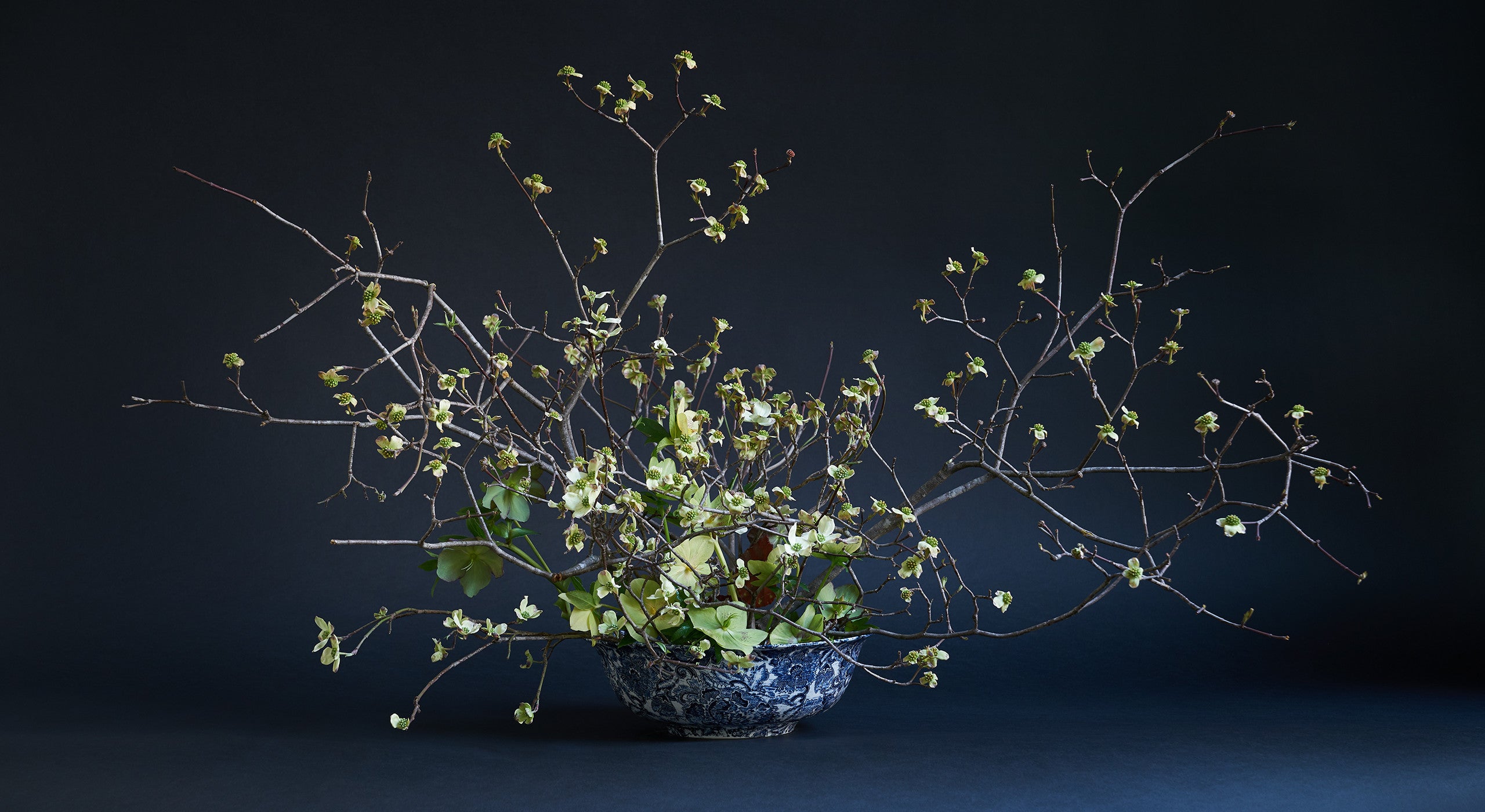
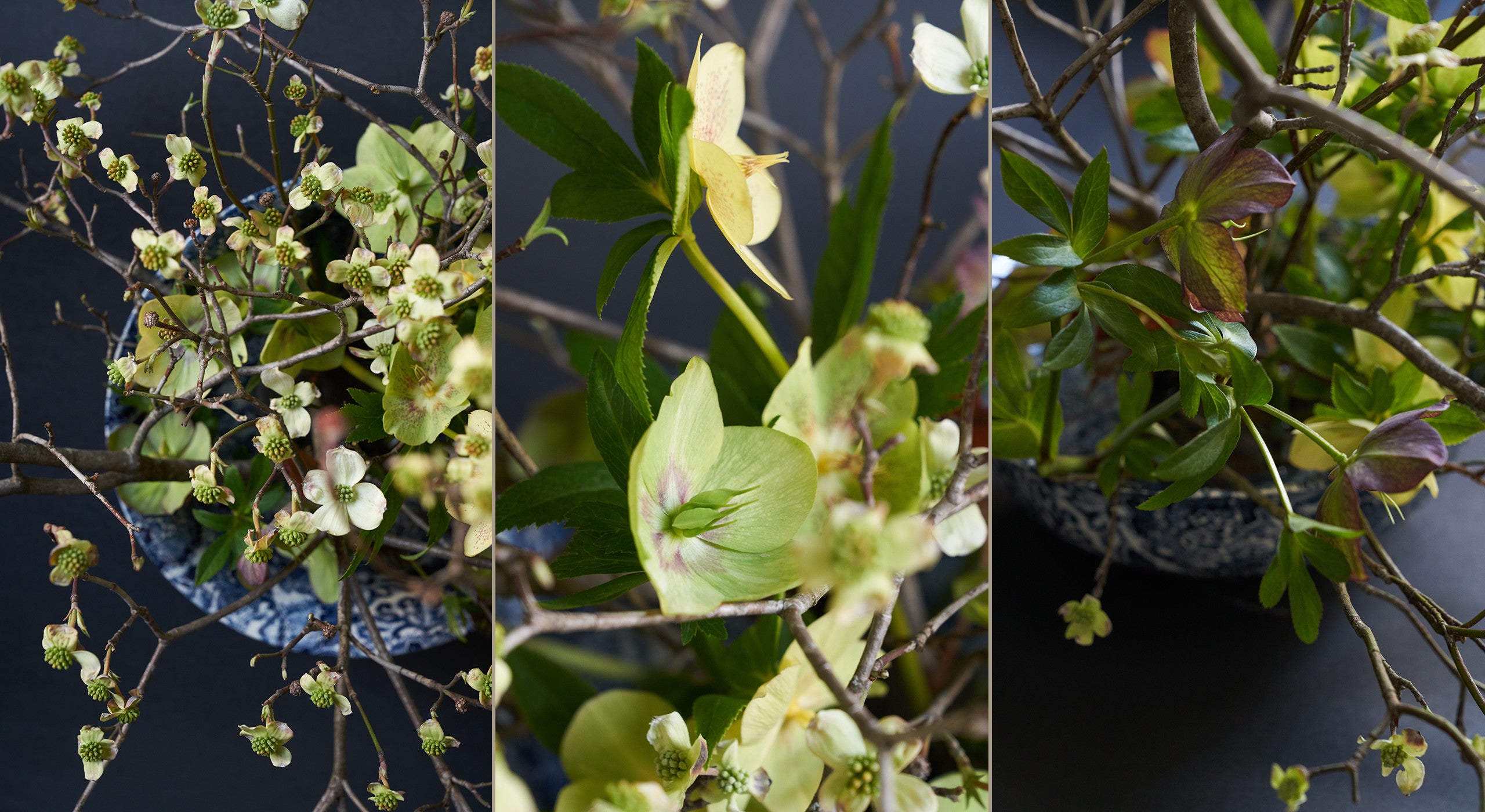
- Photographs by Deirdre Lewis






